Social Publishing
Spredfast, 2016
Problem - Spredfast is a SAAS product that enables companies and brands to manage their social media presence with publishing, customer care and analytics. We needed to redesign the existing publishing experience to allow people the flexibility to disseminate content on social media—whether it’s publishing the same post to multiple channels, the same creative with different messaging for each channel’s audience, or unique posts to each. While continuing support for those channels’ existing functionality, users needed to maintain access to each channel's custom features, such as link previews, targeting, and video.
Solution - We used the redesign as an opportunity to provide a new robust framework that allows for future scalability and achieves custom cross-channel publishing. Looking to further enhance the existing experience, we integrated post previews and pulled in scheduled-post information. This allows people to confirm what they want to publish across all channels and makes it so they can accurately tell their story on social media.
Final Designs
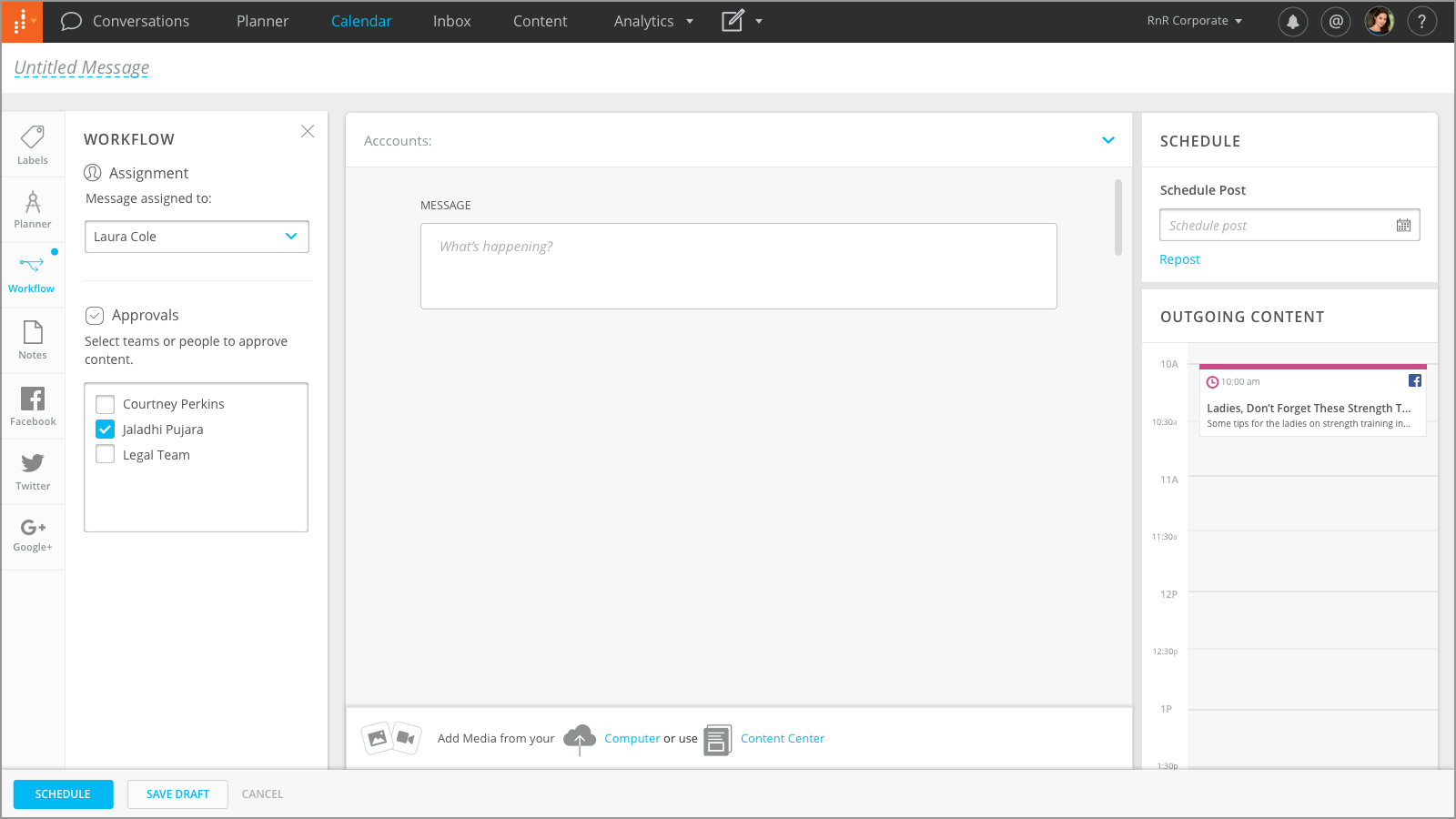
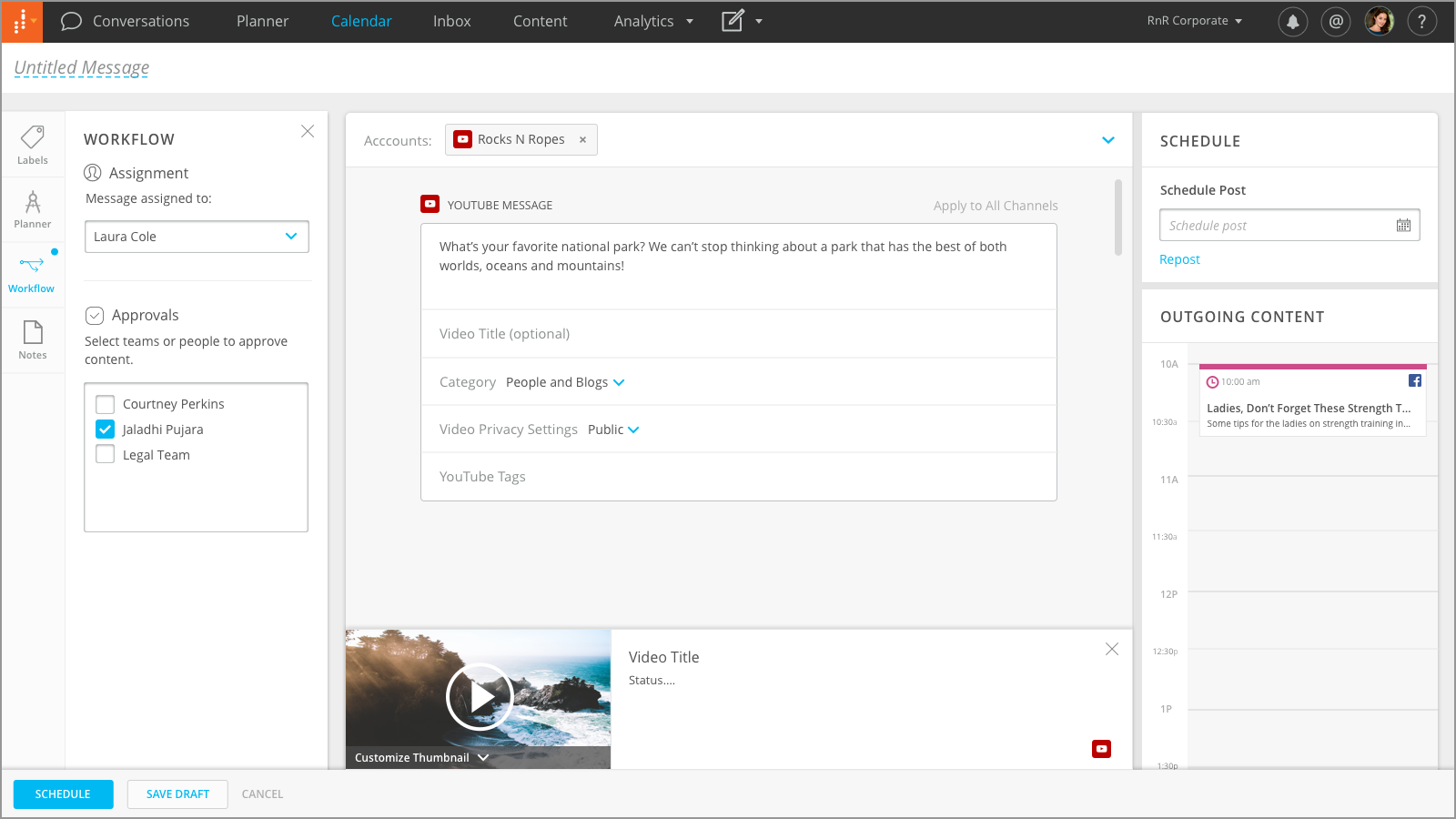
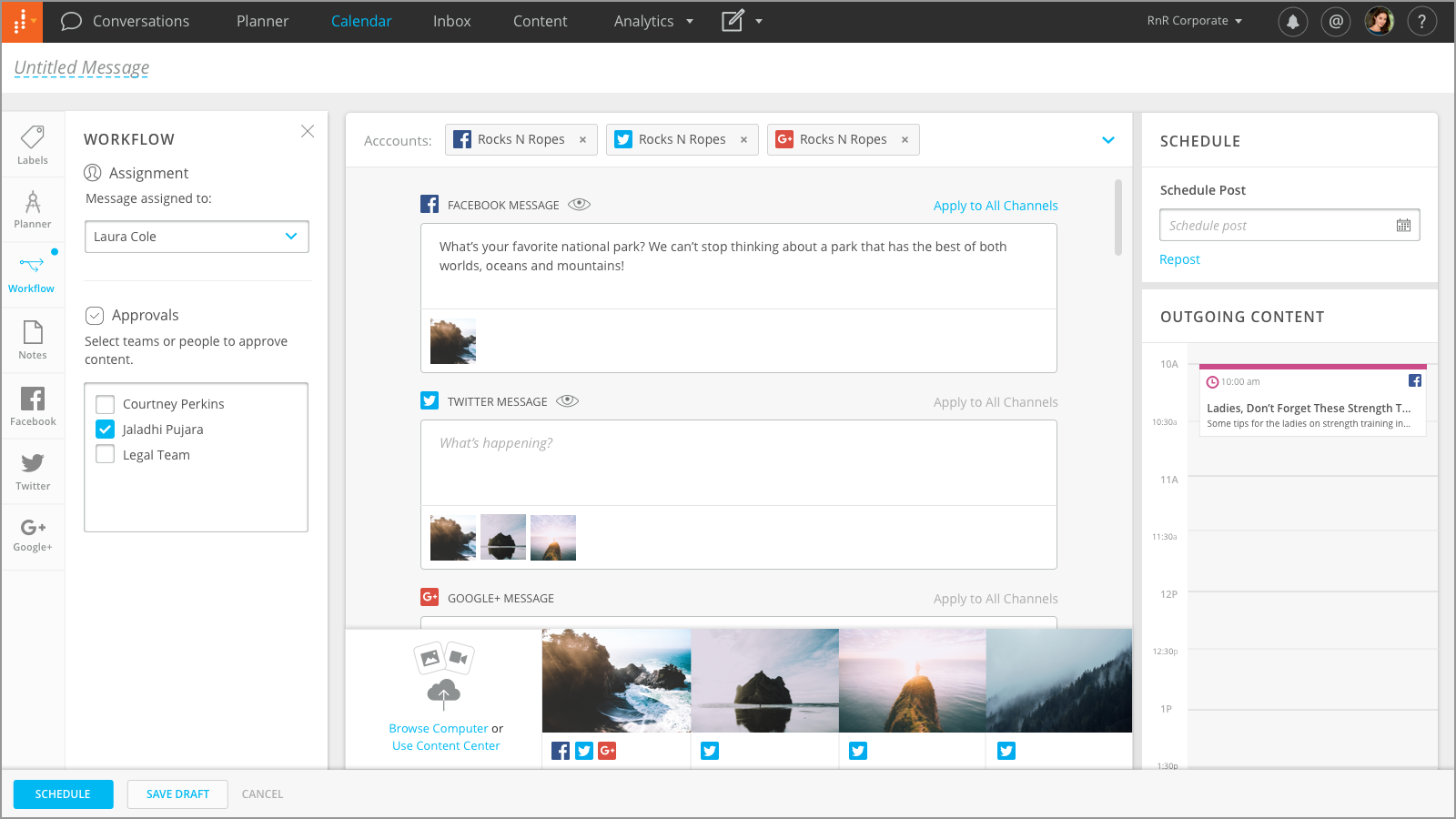
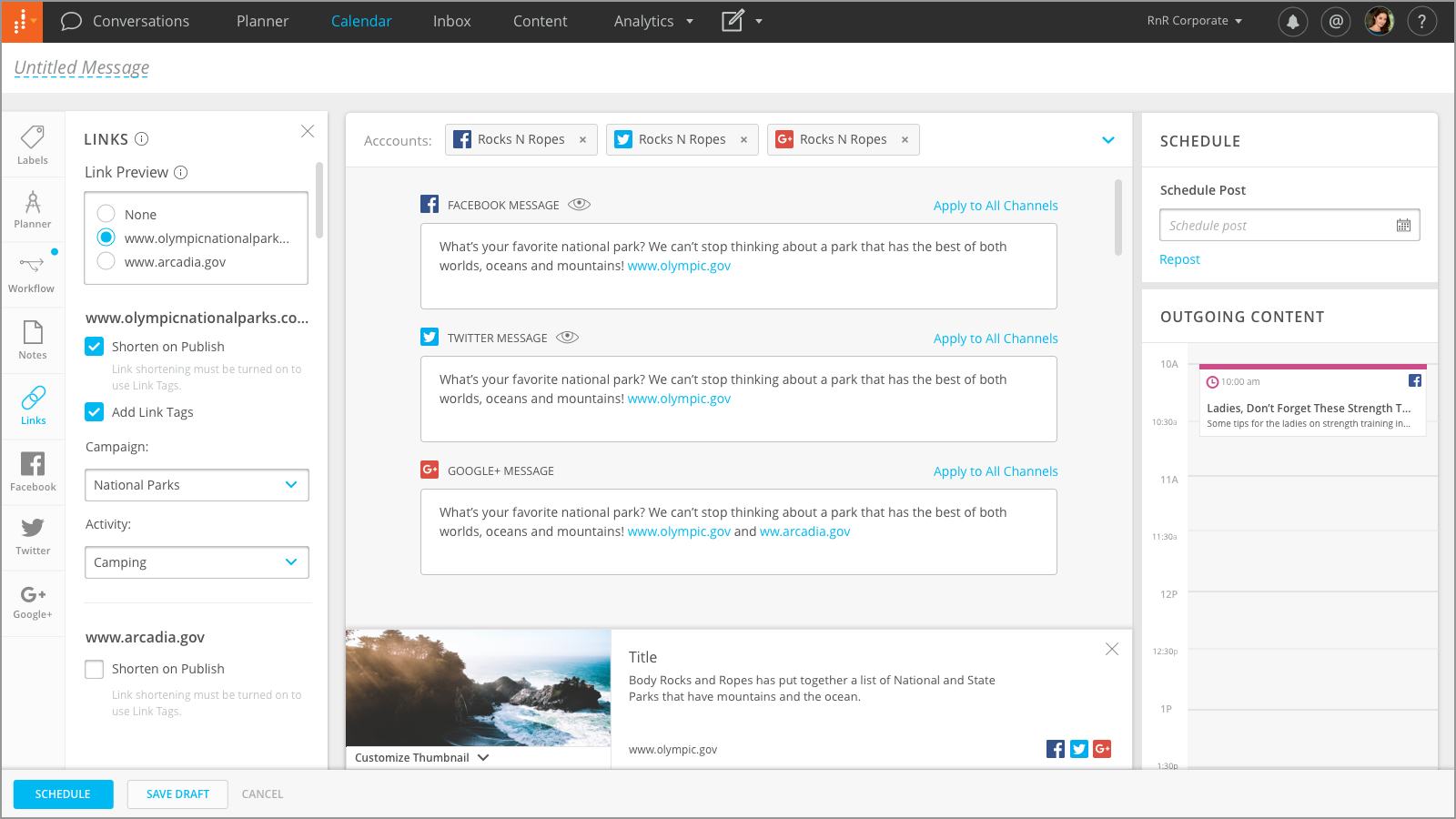
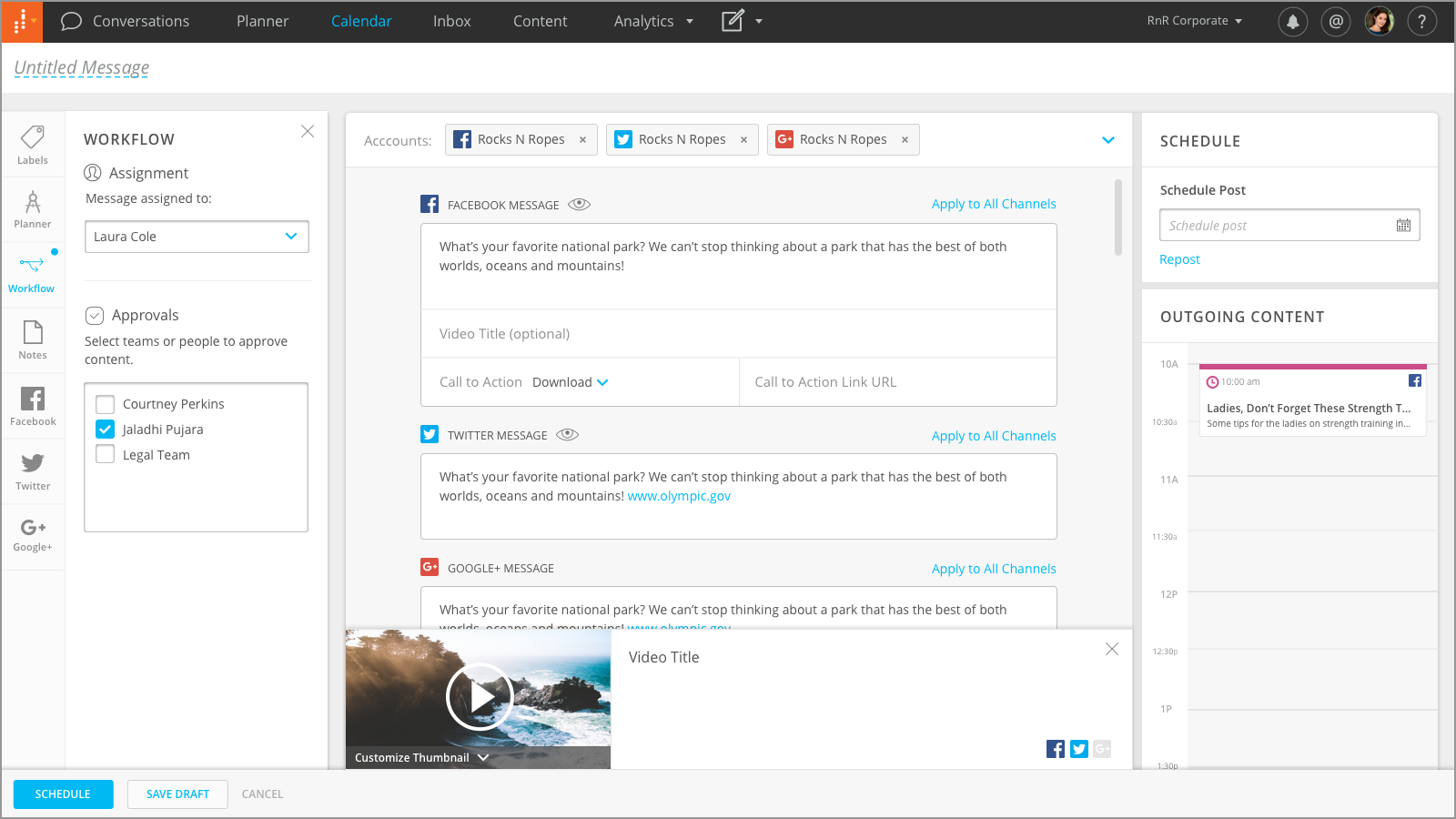
Process Breakdown
Previous Experience
Users could publish only to one social channel at a time. The framework didn't scale well, and it frequently caused issues when we would try to make improvements and add new features. Less popular features were given too much prominence, while frequently used features were hard for users to find.




Design Sprint
I led a five-day design sprint involving other designers, product managers, and developers. We looked for inspiration across native-publishing experiences, analyzed competitor’s offerings, interviewed users, defined the workflow, and concepted. We identified three main publishing styles that companies tend to have for publishing to social media and used those as our north star as we moved through the design process.
Quick Ideation
The design sprint allowed us to explore multiple concepts quickly. Next, we determined which elements we thought worked best, including adding new elements such as insights into users' publishing schedule. We incorporated these into our final concepts.
Testing
At the end of our design sprint, we came up with a framework. We had multiple concepts for several features that we wanted to test with users. We created prototypes and took these designs into user testing to validate the framework, help us solidify features, and define the MVP.
All social networks have different capabilities and features. Because of this, we prioritized stress-testing the framework against all the ways we learned users want to publish. We identified the most complex features, detail-designed them within the new framework, and addressed potential collision or error states to ensure the framework could scale appropriately in any worst-case scenarios.





